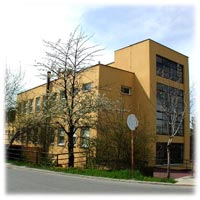Committee
More...
STUDENT PROGRAMME
The agreement between plenipotentiary of CR and director of JINR has been signed in 2010 (see Documents). The agreement allows to send up to 15 PhD. and diploma students into JINR. The study programme is organized by czech universities. The purpose of the student stay is to participate on interesting research for thesis. The stay is limited for 3 years (Ph.D. students) and 2 years (diploma students). Students are supported by special salary and by additional grant to support their research activities in JINR (including participation in conferences).
More detailed information can be obtained from secretariat of the Committee.
More detailed information can be obtained from secretariat of the Committee.
Publications
More...
Searching for influence of the “atomic structure effect” on the KLL and LMM Auger transition energies of Zn (Z=30) and Gd (Z=64)
The absolute energies of the KL2L3(D-1(2)), KL3M2.3(P-3(0.2)), and L3M4M5((1)G(4)) transitions in Zn-67(30) from the EC decay of (67)(31)G a and from the beta(-) decay of Cu-67(29) and those of the KL2L3(1D2) and L3M4M5((1)G(4)) transitions in Gd generate
JINR in the media
More...
Institute in Dubna, Russia, will employ also Czech companies
(Česká televize - 29.3.2012)
Summer internship at the Institute for Nuclear Research in Dubna
(3pól - 13.4.2012)
The expedition to the island of stability.
Interview with the director of JINR V.A. Matveev - Part 1
(Respekt - 10.9.2012)
The expedition to the island of stability.
Interview with the director of JINR V.A. Matveev - Part 2
(Respekt - 13.9.2012)
About the research in the Joint Institute for Nuclear Research Dubna
(Atom Info - 5.8.2013)
(Česká televize - 29.3.2012)
Summer internship at the Institute for Nuclear Research in Dubna
(3pól - 13.4.2012)
The expedition to the island of stability.
Interview with the director of JINR V.A. Matveev - Part 1
(Respekt - 10.9.2012)
The expedition to the island of stability.
Interview with the director of JINR V.A. Matveev - Part 2
(Respekt - 13.9.2012)
About the research in the Joint Institute for Nuclear Research Dubna
(Atom Info - 5.8.2013)




